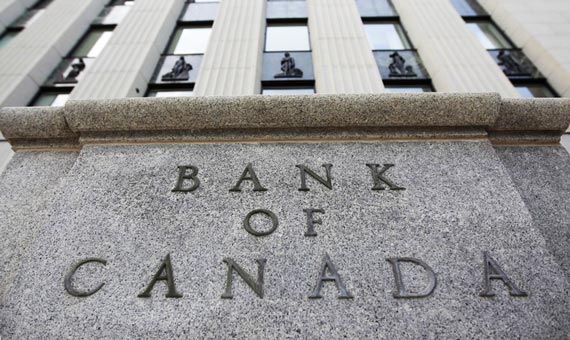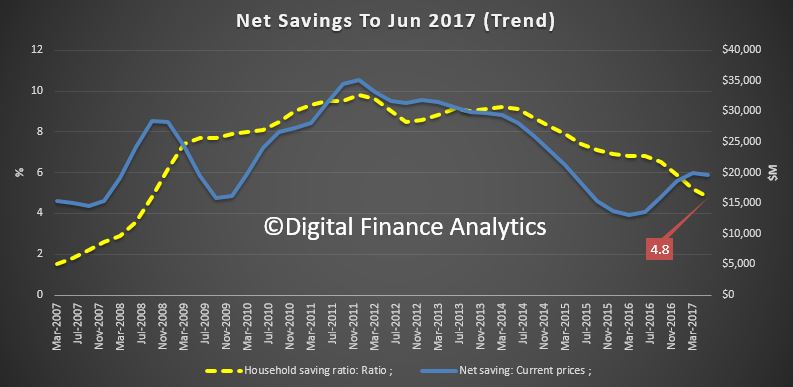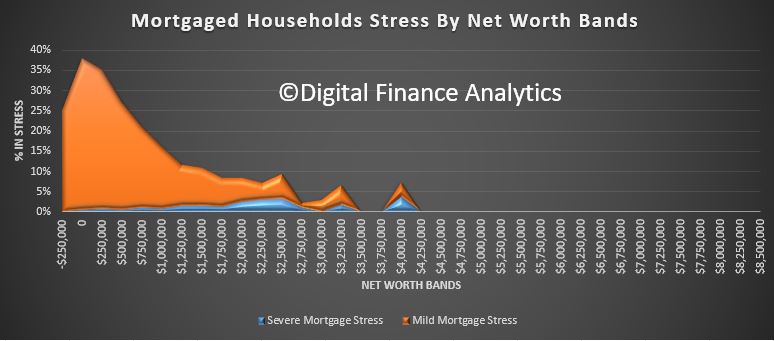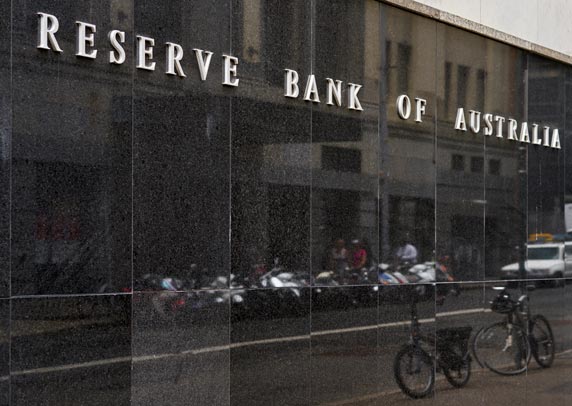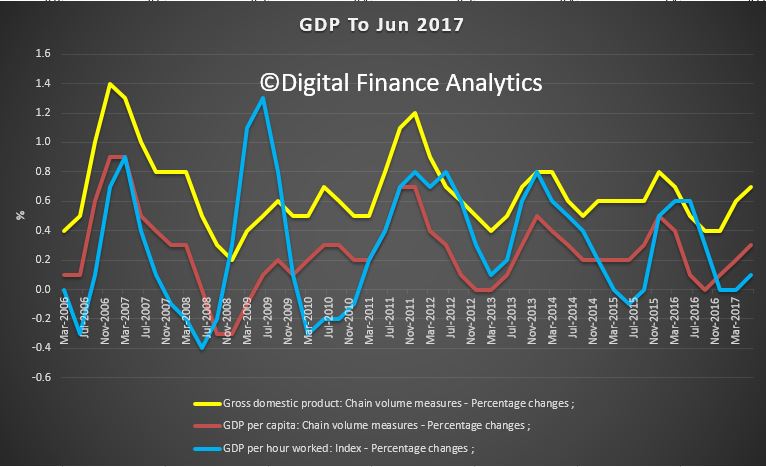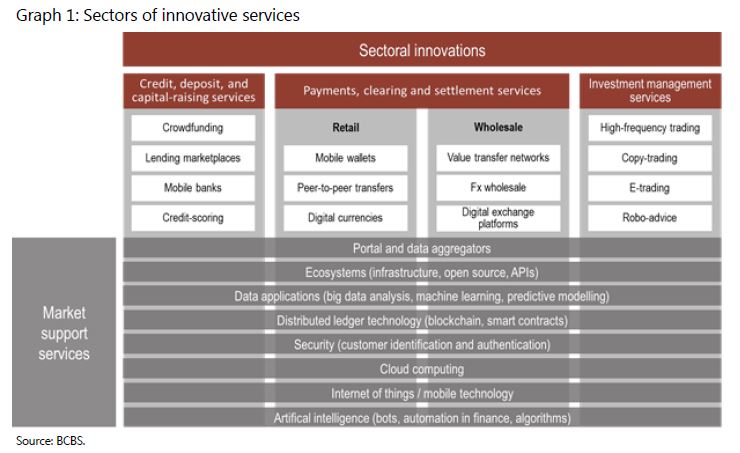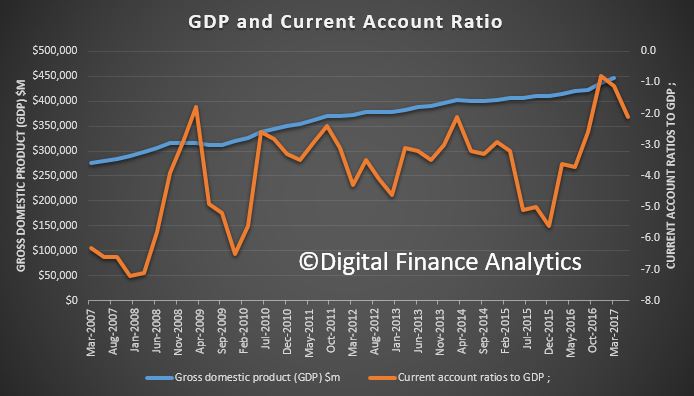A focus on household debt, risks of lower rates, and a discussion about why individual lenders may be myopic about risk. The long term trajectory of rates will be higher. Perhaps.
For some time, the Board has been seeking to balance the benefits of stimulatory monetary policy with the medium-term risks associated with high and rising levels of household debt.
The current low level of interest rates is helping the Australian economy. It is supporting employment growth and a return of inflation to around its average level. Encouragingly, growth in the number of Australians with jobs has picked up over recent months and the unemployment rate has come down a bit. The investment outlook has also brightened. Inflation has troughed and it is likely to increase gradually over the next couple of years. These are positive developments. Even so, it will be some time before we are at what could be considered full employment in Australia and before underlying inflation is at the mid-point of the medium-term target range. This means that stimulatory monetary policy continues to be appropriate.
The Board has been conscious that attempting to achieve faster progress on unemployment and inflation through yet lower interest rates would have added to the risks in household balance sheets. Lower rates would have encouraged faster growth in household borrowing and added to the medium-term risks facing the economy. Our judgement has been that it was not in the public interest to encourage an already highly indebted household sector to borrow even more. More borrowing might have helped today, but it could come at a future cost.
So the Board has been prepared to be patient and has not sought to overly engineer or fine-tune things. In our view, the balance we have struck is appropriate and it is likely that the economy will pick up from here as the drag from declining mining investment comes to an end. Our central scenario is for growth of around 3 per cent over the next couple of years and for the unemployment rate to move lower gradually.
In striking the appropriate balance in our policy setting, we have paid close attention to trends in household borrowing, given the already high levels of debt. Over the past four years, household borrowing has increased at an average rate of 6½ per cent, while household income has increased at an average rate of just 3½ per cent. Given this, the RBA has worked closely with APRA to ensure that lending practices remain sound. Rightly, APRA has had a strong focus on loan serviceability calculations. In some cases, loans were being made where the borrower had only the slimmest of spare income. APRA has also introduced restrictions on growth of investor loans and restrictions on interest-only lending. This has been the right thing to do.
One might ask why lenders themselves did not do more to constrain their activities in these areas, given the earlier trends were adding to risk in the overall system. When everything is going well, it appears that any single institution has difficulty pulling back. Each worries about their competitive position and about the market reaction. Individual institutions are also more likely to focus on their own risks, rather than the risks to the system as a whole. This means that supervisory measures can be useful in helping the whole system pull back. Ideally, such measures would not be needed, with instead the appropriate level of restraint coming out of lenders’ holistic risk assessments. But when this does not occur, supervisory measures can play a constructive role. Most lenders are now operating comfortably within the new restrictions and these measures are not unduly restraining the supply of overall housing credit.
One of the factors that has a bearing on current discussions of household debt is the slow growth in household incomes. Over the past four years, nominal average hourly earnings have grown at the slowest rate in many decades. This means that borrowers haven’t been able to rely on rising incomes to reduce the real value of the debt repayments in the way they used to; debt-service ratios will stay higher for longer. This is something that both lenders and borrowers need to take into account.
The slow growth in wages is a common experience across most advanced economies today. It lies behind the sense of dissatisfaction that is being felt in many communities. The reasons for this slow growth in wages are complex. Part of the explanation is a perception of greater competition from both globalisation and technology. An increased sense of uncertainty among workers is also likely to be playing a role, as is a change in the bargaining environment.
The slow growth in wages is contributing to low inflation outcomes globally. My expectation is that this is going to continue for a while yet, given that the structural factors at work are likely to persist. But I am optimistic enough that I don’t see it as a permanent state of affairs. It is likely that, as our economy strengthens and the demand for labour picks up, growth in wages will pick up too. The laws of supply and demand still work. Even at the moment, we see some evidence through our liaison program that in those pockets where the demand for labour is strong, wages are increasing a bit more quickly than they have for some time. The Reserve Bank’s central scenario is that, over time, this will become a more general story.
On another matter, over the past few months there has been quite a lot of interest in the regular special papers considered by the Board. This followed the release of the minutes of the July meeting, which recorded that the Board had held a discussion of the neutral interest rate (that is, the rate at which monetary policy is neither expansionary nor contractionary).
The main conclusion from that discussion was that, in future, it was likely that the average level of the cash rate would be lower than it was before the financial crisis. This reflects slower trend growth in the economy and a shift in the balance between savings and investment. When people want to save more and invest less, the return on the risk-free asset is lower. These same forces are at work around the world, so that the average level of interest rates globally is likely to be lower than before the financial crisis.
A second conclusion from our discussion was that the cash rate is around 2 percentage points below our current estimate of the neutral rate. As we make further progress on both unemployment and inflation, we could expect the cash rate to move towards this neutral rate over time.
It is worth repeating that the Board’s consideration of these issues carries no particular message about the short-term outlook for monetary policy. The discussion was part of our regular in-depth reviews of important issues. As is appropriate, these discussions are reflected in our minutes. I hope that you see Australia’s central bank as transparent, analytical, rational and independent. We seek to look at issues in detail and from different angles and to explain our thinking to the public. While not everybody agrees with our decisions, we do our best to explain those decisions and the framework we use to make them.

